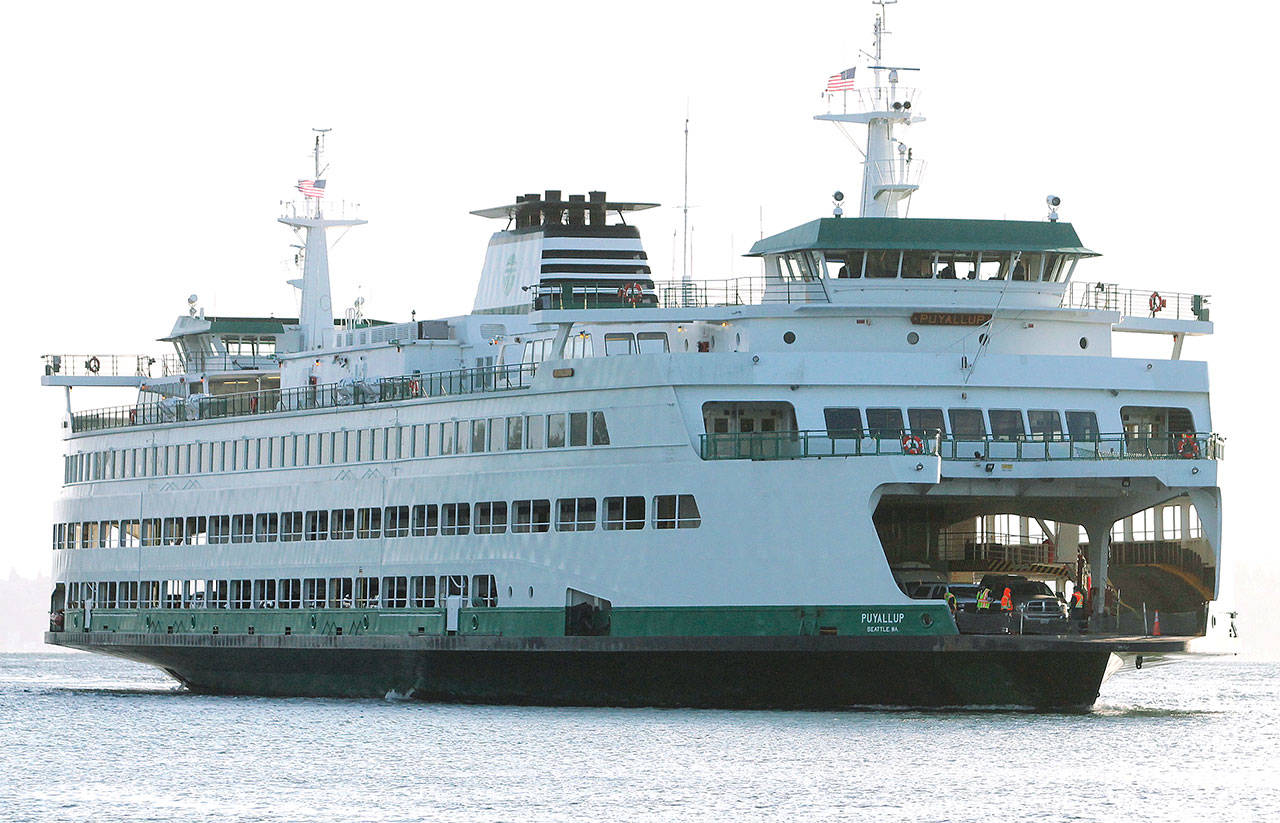With more folks working from home and domestic and international travel dropping off due to the COVID-19 pandemic, ferry traffic has dropped 59 percent to Bainbridge Island.
Washington State Ferries ridership overall fell 41 percent from the previous year, down to about 14 million customers — it’s lowest count since 1975.
And for the first time since operations began in 1951, the ferries carried more vehicles (7.6 million) than passengers (6.4 million) thanks in part because of a 74 percent drop in walk-on passengers on the Seattle-Bainbridge Island route.
Ian Sterling, communications director for the ferry system, noted that although 2020 was rough, the ferries have rebounded to a greater degree than other modes of transportation, such as bus systems, trains and the airlines.
“As dire as this may sound, we are the lucky ones,” Sterling said.
The Seattle-BI route has been the busiest one every year since 1958, but without workers commuting from Kitsap to Seattle and tourists seeking a quiet respite from the busy downtown of the big city, it was surpassed for the first time in 52 years by the Kingston-Edmonds and Mukilteo-Clinton routes. The BI route also operated with just one boat for part of the year because of a lack of demand.
The same can be said for the other routes connecting Kitsap County to King County. The Seattle-Bremerton route had the largest year-to-year drop — excluding international routes — with ridership down 64 percent. Walk-on passengers were down 72 percent, and that route also had one boat service for months. The Bremerton route already had fewer runs than the Bainbridge route, and the cut down to one boat meant much longer wait times.
The Kingston-Edmonds route, which serves as a destination route for many to the Olympic mountains, fell just 29 percent. Unlike the BI and Bremerton routes, the Kingston route was rarely without one of its two boats and ended up having more overall sailings.
The Fauntleroy-Vashon Island-Southworth route, which connects South Kitsap to the Vashon community and West Seattle, also saw a drop in demand and ridership declined 39 percent.
Demand has been one of the key drivers in determining where to adjust service along with crew availability, boat availability and funding; limiting the crew members’ possible exposure to COVID-19 has been a priority.
“We have to keep our crews healthy,” Sterling said. “If the general population has a lot of COVID-19 in it, it’s more likely they’ll come in contact with a crew member, spread it to a crew member, and they take it home; pretty soon you don’t have enough people to run the boat.”
The winter months are generally the slowest for ferries, as they typically carry 50 percent more customers in the summer, so the ferries expect to see an increase in ridership in 2021.
Sterling said, “Ridership should to continue increase, particularly if we get a handle on the pandemic.”
By the numbers Edmonds/Kingston: Ridership down 29 percent, vehicles down 22 percent.
Seattle/Bainbridge Island: Ridership decreased 59 percent, and had the largest drop of all ferries in walk-on passengers at 74 percent. Vehicles decreased 36 percent.
Seattle/Bremerton: Largest drop — excluding international Anacortes/Friday Harbor/Sidney, BC route — with at 64 percent. 72 percent decrease in walk-on passengers and vehicles down a system-high 50 percent.
Fauntleroy/Vashon/Southworth: Ridership fell 39 percent and vehicles 31 percent.



